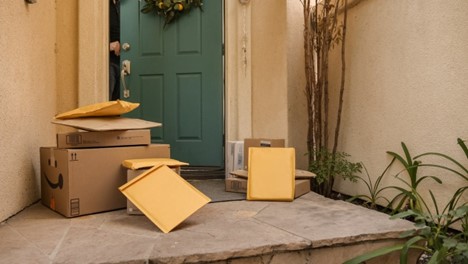The pressure for free shipping is hurting some businesses.
 The rise of e-commerce in the past few years has resulted in some considerable industry changes. One of these changes is the growing expectation among consumers that online retailers provide free shipping at checkout. However, this isn’t always a plausible option for every business. In this article, we take a look at free shipping, who can access it, and the consequences of the growing demand.
The rise of e-commerce in the past few years has resulted in some considerable industry changes. One of these changes is the growing expectation among consumers that online retailers provide free shipping at checkout. However, this isn’t always a plausible option for every business. In this article, we take a look at free shipping, who can access it, and the consequences of the growing demand.
Small package shipping is a growing industry.
The pandemic changed the e-commerce and small package shipping landscape worldwide. Over 131 billion parcels shipped worldwide in 2020, a number that is supposed to surpass 266 billion by 2026. This has created great growth for many businesses, alongside a huge labor demand, and ever-present supply chain issues. Likewise, it has added to the expectation for customers to have cheap or free shipping fees available to them at checkout. In fact, as of 2021, 73% of consumers would rather get free shipping and wait longer to receive an order than pay for faster shipping.
Shipping infrastructure is expanding.
E-commerce’s popularity means that national infrastructure is changing to accommodate this consumer trend. For example, according to logistics company Maersk, deliveries – depending on the shipper and the availability of their fulfillment centers – can reach 75% of the US population within 24 hours, and 95% within 48 hours. Obviously those in more remote parts of Canada and the United States don’t see those same quick delivery times, but the reality nowadays is that the majority of North Americans can expect quick delivery on many goods.
Is free shipping free?
Free shipping is a perk many look for when making an online purchase. But, of course, nothing is really free. Free shipping just means that someone else is paying for the cost of delivering your order. And if you’re ordering from a small to medium sized business, that cost may be more than you think. Dhruv Saxena, founder of ShipBob, spoke with CNBC on this issue, saying, “anyone can offer an Amazon Prime two-day shipping. It’s just the cost that…might incur in providing that service.” According to Saxena, it would cost a business on average between $25-35 USD for a typical two-day shipping rate for a parcel. This is offset when large companies, such as Amazon, Etsy, or Walmart, generate mass online sales, and can achieve bulk shipping rates. Unfortunately, larger companies’ access to bulk shipping rates and better speeds means there is consequential pressure on smaller businesses to provide the same service. In fact, as of 2019, three-quarters of independent retailers in the United States told the Institute for Local Self-Reliance that Amazon’s dominance is a “major threat to their survival.”
Some businesses offer loyalty programs with free shipping as a perk.
On top of bulk shipping rates, one way for businesses to offset the cost of free shipping is via customer loyalty programs. These programs tend to go a long way in terms of customer satisfaction, and often save customers money on individual transactions, but usually result in customers spending more money at a business overall. As Harvard Business Review (HBR) explains, “the average Amazon Prime member spends more than twice as much as the average non-member. This may seem to imply that the program is responsible for a substantial increase in revenues, but the difference in spending could also be driven by self-selection (that is, customers who already intend to spend more may be more likely to choose to become members).” Offering these loyalty programs isn’t cheap, especially when it comes to offering free shipping rates. HBR found that when brands offer loyalty programs, average basket sizes tend to go down, even if customers are shopping more frequently. Meaning, businesses are paying for free shipping more often, for separate, smaller orders.
What can your business do to protect its bottom line and keep customers happy?
Business is a balance of serving your customers while also keeping your bottom line in mind. So, when free shipping is in demand, how can your business find that balance? There are several tactics you can employ to help better get bang for your buck with free shipping:
- Restrict free shipping – consider limiting free shipping to only certain items or categories, specifically, products or product categories with sustained low shipping costs–for example, items with lower actual or dimensional weight.
- Increasing product prices – this can be a risky move, but potentially worthwhile if you’re increasingly only to offset the price of free shipping.
- Adjust free shipping thresholds – you don’t have to offer free shipping on every order, you can increase the minimum order value required to qualify for free shipping.
For all of these solutions, find a sweet spot between offering a service your customers want, and being realistic about what you need in return.
In conclusion…
The rise of e-commerce has many of us accustomed to free shipping when online shopping. However, this can be a harder standard to achieve for small and medium businesses that don’t hit the same sales numbers as giants such as Amazon. With free shipping continuing to rise in popularity, those smaller businesses must take steps to protect their bottom line while meeting customer satisfaction.

